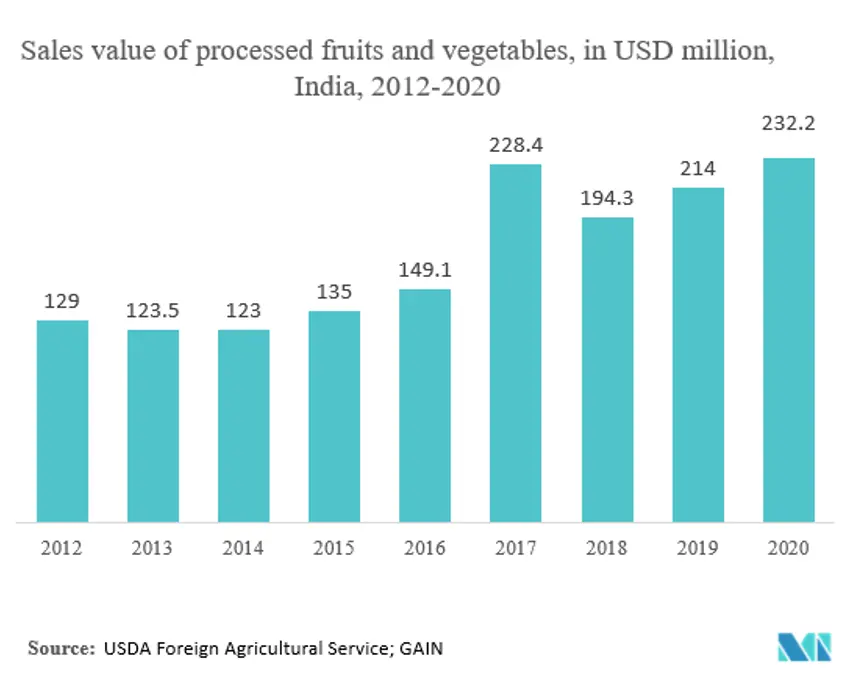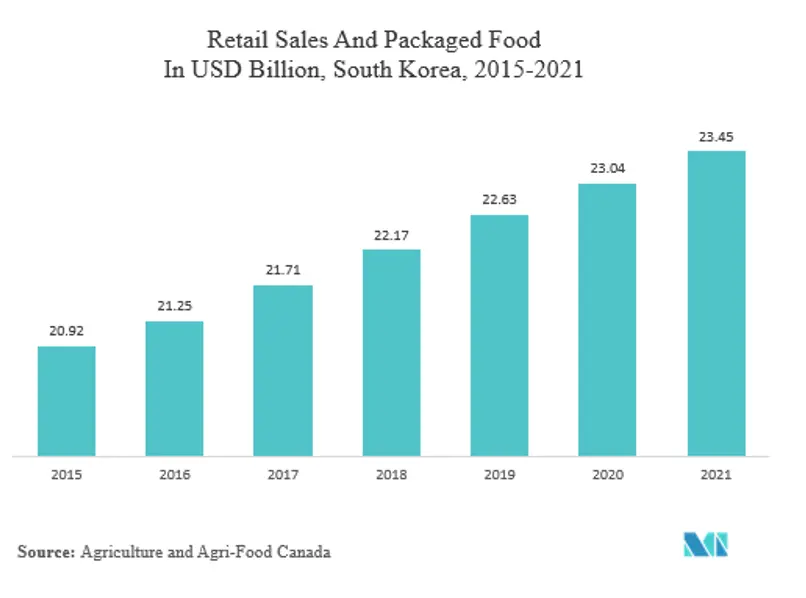Market Trends of Asia and Africa Food Cans Industry
This section covers the major market trends shaping the Asia & Africa Food Cans Market according to our research experts:
Fruits and Vegetables to Drive the Market Growth
- Canned fruits and vegetables cost less when compared to frozen alternatives or fresh alternatives without compromising nutrition. The only drawback for canned vegetables is the sodium content, but consumers can choose lower sodium versions or rinse the vegetables.
- According to the United Nations agency report published in January 2021, 1.3 billion South Asians could not afford a healthy diet. Further, the pandemic has increased the prices of fruits, vegetables, and dairy products, making canned fruits and vegetables a better option.
- From the production point of view, India and China are the primary producers of vegetables and fruits. According to the Food and Agriculture Organization, in 2019, China produced 588.26 million metric ton of fresh vegetables, followed by India at 132.03 million metric ton. The massive production of vegetables creates opportunities for canning to increase the shelf life.
- The exports are also triggering the quality improvement of the canned vegetable and fruit exports. For instance, according to a memorandum signed by China and Canada, the Chinese canned vegetables have specific export requirements.

South Korea to Witness Significant Growth Rate
- South Korea has seen growth in items such as processed meat, vegetables, and processed vegetables. According to the National Statistics database of Korea (KOSIS), the average monthly expenditure on processed meat per household increased from KRW 12,190 to KRW 14,470 in 2020.
- Similarly, the expenditure on vegetables and processed vegetables increased from KRW 33,580 in 2019 to KRW 41,370 in 2020. Thus, the growth in the processed meat and vegetables in the country creates the need for appropriate packaging, such as cans.
- The government is making efforts to reduce its plastic waste production by half and more than double recycling rates from 34% to 70% by 2030.
- Also, in May 2020, the government revised the standards and specifications for food contact materials. The revision is for common manufacturing standards and specifications, including improved methods and layouts for food utensils, containers, and packaging.
- The standards also include clarification on the use of recycled plastic resins. Hence, government initiatives encourage the push away from plastics and other materials such as steel and aluminum, thus driving the country's food cans.
- The COVID-19 pandemic has played a significant role in the shift toward canned food, thus driving the market for food cans. For instance, according to a survey by Shinsegae, as of February 2020, the online sales of canned food increased by a significant 268%, followed by rice (187%), instant noodles (175%), and prepared meals (168%).

